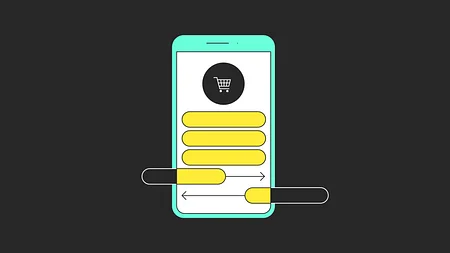Top 6 things to think about when reimagining your partnership strategy

I was recently asked whether digital transformations meant partnerships will become obsolete. In fact, I think quite the opposite - banks who don’t use partnerships will become obsolete.
Disruptive innovation is driving a structural change to the market, and the definition of banking has fundamentally changed. With almost daily news of market moves, it can sometimes be difficult to find, as we say at 11:FS, clarity in the chaos.
Buy Now Pay Later (BNPL) fintechs have soaring valuations, payments companies are stealing your business banking customers and crypto is going mainstream (well, nearly).
We’re seeing net new value created in the industry, with innovation occurring outside of supposedly strict banking parameters. Creation of solutions is now agnostic to product verticals.
The source of success? Partnerships.
The biggest and most exciting disruptors are working together to solve customer needs. They’re partnering vertically across the value chain (pairing transactional rails with capabilities and products) and horizontally (across different customer contexts, such as home, wealth, health, etc.) to deliver holistic customer experiences.
What does that look and feel like? It’s intelligent services and embedded journeys. It’s blink-and-you’ll-miss-it banking.
What does that look and feel like? It’s intelligent services and embedded journeys. It’s blink-and-you’ll-miss-it banking.
It’s time for banks to see partnerships as the absolute pinnacle of success for the longevity of the business. Not just a bolt-on to their current account.
And to give credit where it’s due, the tide is turning. Decision-makers and intrapreneurs in banks are beginning to understand that partnerships can enhance the value proposition and transform the profile of the business - from digital transformation, to growth and cost reduction.
What’s still missing, however, is a well-considered partnership strategy that not only has ambition and vision, but commitment. Too often, we see a disparate and scattergun approach to partnerships - going after what’s hot, rather than what’s right. Or too conservative an approach, working with ‘whale vendors’ due to perceived safety and security, rather than ‘schools of fish’.
It can be an overwhelming change, but as a starter for ten, here are the top six things to think about when reimagining your partnership strategy.
1. How committed is the business to partnership?
Partnership can’t be a side of desk activity or something that happens discretely in product or procurement teams. It has to be considered centrally.
Partnership can’t be a side of desk activity or something that happens discretely in product or procurement teams. It has to be considered centrally.
- Who’s responsible for partnerships in the business? Are you relying on one person to seek out ‘bolt-on’ opportunities? Or do you have a team of people who work together to curate, implement and manage your strategy?
- Do you have a modernised approach to partnership in the context of digital transformation? Have you readjusted your risk appetite to reflect the leaps you want to make?
- Are you leveraging partnerships to incrementally help tackle slim, vertical transitions to digital? Or do you still look to make large-scale, budget-heavy, slow-benefit realisation change across the whole of the business?
2. Are you clear on your strategic intent and do you communicate this powerfully?
To be fair to banks, they’ve got the short straw when it comes to valuation. One of the biggest challenges executives face is planning and transforming the business for the long-term, in an environment where in-year, short-term return is everything.
However, it’s not impossible. Bold intent and clarity on value and benefit, combined with crystal-clear market communication and a sophisticated partner strategy, can build confidence in transformational activity.
Do you select partners based on your needs today? Or to help you move towards the capability the business will need in 5-10 years?
Do you truly understand the difference between ‘whale vendors’ (monoliths) and ‘schools of fish’ (primitives) in your legacy architecture transformation?
Is your partnership based on acceleration of siloed goals? Or are you maximising the reuse of capabilities horizontally across the business? (e.g. onboarding)
How do you balance known compromises (to get ahead of the competition), with partnerships that materially move the dial on growth and cost?
Can you reverse engineer your capabilities as a bank? Are you exploring embedded finance with us as the provider, opening up new ‘faceless’ revenue streams?
3. Are you open for business?
Would you go into a shop that didn’t have a nice shop front? Or if the door was really difficult to open? You might, but it would take a long time. You’d probably get really frustrated and give up, or you might not even go in at all.
These considerations are the equivalent of bank partnership readiness.
- Are you present in fintech communities? How are you marketing yourself as being ‘open for business’ to fintechs and digital providers?
- Do you treat APIs as simply a bit of tech, or a product in itself? Do you appreciate that the quality of a potential partnership is often determined by the quality of the API?
- Do you have an active and easily accessible sandbox for developers to plug into?
4. Do you employ the right amount of effort into strategic alignment?
The best partnerships are born out of a 50:50 relationship. It’s not ‘what can I get from you?’. It’s ‘what can we achieve together?’.
The best partnerships are born out of a 50:50 relationship. It’s not ‘what can I get from you?’. It’s ‘what can we achieve together?’.
- Do you really take the time for proper discovery with your partners? Do you understand each other’s objectives, goals and desired outcomes? Are you transparent about what you’re looking to achieve?
- Do you understand your partner’s roadmap? And do they understand yours? Do you communicate on future capabilities? Or evaluate and utilise each other based on today?
- Do you understand your partner’s ecosystem? What can you build on? And how might this accelerate your plans?
5. Have you effectively evaluated your procurement processes in pursuit of fintech partnership goals?
If speed to market is what you’re looking for, it’s time to put the pulse on procurement. Fintechs like to do business fast. If they want to work with you for access to your large customer base, but it takes four months to get through procurement, guess what? They’ll go elsewhere.
- Do you have a blanket approach to due diligence? Or could this be altered for a bespoke approach?
- How well-skilled is your procurement team in digital partnerships? Do they know what to look for and what assessment criteria to apply? How effective is the communication between the team and the business?
- How digital are your documentation and contract processes? Are you unnecessarily losing time?
6. Do you seek partnership as a result of reacting to the market? Or do you build it around solving your customer’s needs?
The best solutions are created to solve customers’ Jobs to be Done. At the heart of strong partnership decisions lies strong (and passionate) customer understanding.
- Are you adding this partnership as a reaction to what the market is doing? Or because you think it will truly solve your customers’ needs?
- Do you innovate with or without preconceived boundaries? Are product teams encouraged to be visionary and not worry about capability blockers in the bank today?
- Do you look outside of your industry for inspiration? Do you dissect the partnership models of those that you admire? Developing an understanding of how they got to where they are today?
Solve these, and you’re off to a pretty good start.



